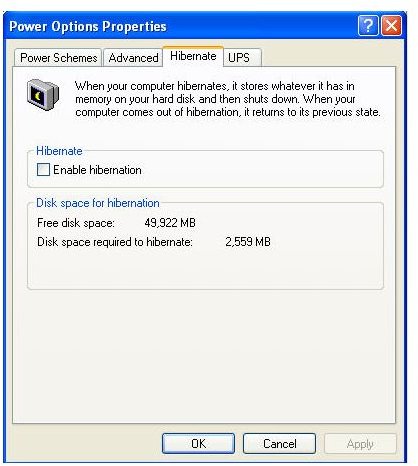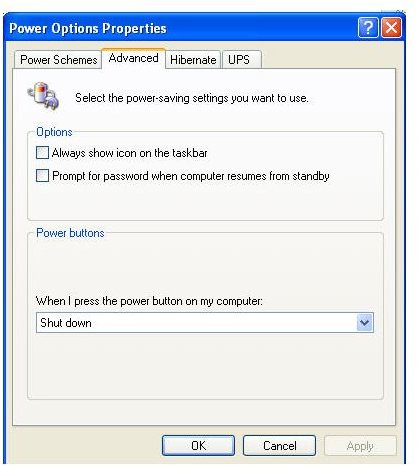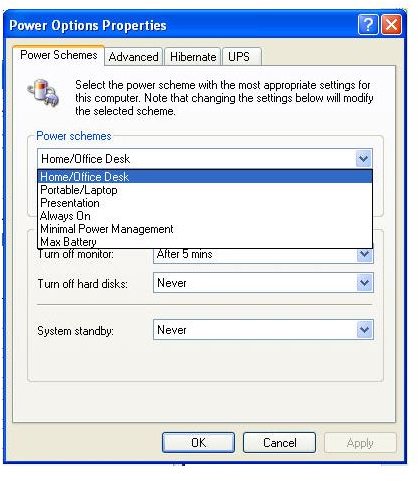Use Power Management Settings to Decrease Power Consumption - Helpful Energy Savings Tips You Can Do with Windows XP!
If you’re concerned about lowering your ecological footprint find out how much electricity your computer uses and then take these steps to lower that ouput!
Find Settings
Start > Control Panel > Performance and Maintenance > Power Options. This will open a window with four tabs: Power Schemes, Advanced, Hibernate, and UPS. The UPS tab is for uninterrupted power supply settings. If you don’t have a backup power supply, then you need not worry about those settings. They’ll be automatically disabled.
Power Schemes
The settings you choose will be dependent upon how you use your computer. The schemes in the pull down menu allow you to select one, general option that will adjust all the power settings automatically. This can be useful, but for most people, it’s better to choose settings individually so you have the most control over making the options work for you. From this tab you can change monitor power settings, hard disks, and system standby.
If you set your monitor to turn off after 1 minute, but you do a lot of reading online, the monitor may shut off when you don’t want it to. Monitors can be set to turn off after 1 minute all the way to 5 hours. While choosing any of those settings is better than just leaving it on, 5 hours is pretty unnecessary. Set your monitor to turn off after 5 minutes, then adjust it to your liking. The lower you set it, the better. When your monitor is off it’s consuming less energy. By setting it to turn off, you won’t have to remember to hit the power button. Alternatively, laptop displays consume less power, but you will still reap benefits from adjusting your power settings.
Your hard drive is one of the worst power consumers. The options for when your hard drive turns off are the same as with the monitor setting. This setting stops your hard drive when you’re not using your computer. If you often walk away from your computer only to come back five minutes later, then give yourself a bit of leeway with this setting.
Standby
The standby setting basically turns off your computer without shutting it down. It remains active, takes less time to “wake up” than restarting and everything active on your desktop remains so throughout standby. Remember that active items aren’t saved automatically when your computer goes to standby. This setting is perfect for when you take a ten minute break from computing, but it isn’t a replacement for hibernate settings.
Hibernate
This setting has its own tab in Power Options. Setting your computer to hibernate when not in use is a huge energy saver. When your computer goes into hibernation, it automatically saves all active items, then shuts down completely. The hibernate tab is where you enable the option. To change hibernate settings, go to the Power Schemes tab. Once it is enabled, the hibernate settings will be listed below the standby settings.

Advanced Options
From this tab you can elect to show the power icon in the taskbar and prompt for password when computer returns from standby. You can also choose what your computer will do when you press the power button. Your power button options are: Do nothing, Ask me what to do, Standby, Hibernate, or Shut down. This option doesn’t necessarily save power, but it can make using your other power settings as easy as pushing a button.

Laptops
If you’re using Windows XP on a laptop, there are a few more settings available to you. The Power Options window will have settings for when you’re laptop is plugged in and when you’re running on battery power. Most laptop users are at least somewhat familiar with these settings for prolonging battery power. In essence, select the options that require the least power usage from your laptop and won’t prohibit you from doing what you need to do. A helpful article for laptop users can be found here.
